Creation of grammar: a cognitive-typological approach
DOI:
https://doi.org/10.54166/rhle.2021.16.07Keywords:
Habere tenere diachrony, Spanish/Portuguese, Typology, Creation of grammar, Creation of lexiconAbstract
This paper offers a review of the long history of HABERE, particularly in Spanish, with some mention of Portuguese. Some of the chapters of this evolution present a close relationship with TENERE, with whom it shares part of its meaning, both as a possession verb and later as an auxiliary. Nowadays its practically only function (together with that of auxiliary) as a verb of existence is briefly referred to. Towards the end, this diachrony is interpreted in relation to typology (particularly the one proposed by E. Coseriu), and to certain cognitive views emphasizing the usefulness of considering the concepts of synthesis and analysis to observe both type and nature of change. Finally, with examples, the relationship of all these processes with the strategies of natural languages for "creating grammar" and "creating lexicon" is considered.
Downloads
References
Callou, Dinah (2006): “Variação e mudança linguísticas: a substituição de haver por ter”. En M. Sedano, A. Bolívar & M. Shiro (eds.): Haciendo lingüística. Homenaje a Paola Bentivoglio. Caracas: Universidad Central de Venezuela, 147-161.
Carrasco Gutiérrez, Ángeles (ed.) (2008): Tiempos compuestos y formas verbales complejas. Madrid / Frankfurt: Iberoamericana / Vervuert. DOI: https://doi.org/10.31819/9783865278654
Company Company, Concepción (1985): "Los futuros en el español medieval, sus orígenes y su evolución", Nueva Revista de Filología Hispánica 34/1, 48-107. https://doi.org/10.24201/nrfh.v34i1.1795 DOI: https://doi.org/10.24201/nrfh.v34i1.1795
Company Company, Concepción (2006): “Tiempos de formación romance II. Los futuros y condicionales”. En C. Company Company (dir.): Sintaxis histórica de la lengua española. Primera Parte: la frase verbal, vol. I, México DF: Universidad Nacional Autónoma de México / Fondo de Cultura Económica, 349-422.
Coseriu, Eugenio (1958): Sincronía, diacronía e historia. Montevideo: Universidad de la República.
Coseriu, Eugenio (1988a): “Linguistic Change Does not Exist”. Trabajo presentado originalmente en la UCLA Conference on Linguistic Change, Mayo de 1982. Publ. en J. Albrecht (Hrsg.): Enérgeia und Ergon, Band I. Schriften von Eugenio Coseriu (1965-1987). Tübingen: Gunter Narr, 147-161.
Coseriu, Eugenio (1988b): “Der romanische Sprachtypus. Versuch einer neuen Typologisierung der romanischen Sprachen”. En J. Albrecht (Hrsg.): Enérgeia und Ergon, Band I. Schriften von Eugenio Coseriu (1965-1987). Tübingen: Gunter Narr, 207-224.
DLE = Real Academia Española & Asociación de Academias de la Lengua Española: Diccionario de la lengua española. Edición del Tricentenario. En línea: <https://dle.rae.es/>.
Documenta Catholica Omnia. En línea: <https://www.documentacatholicaomnia.eu/1003/1001/Z_065_110_103_ 101_108_111.html> [6/9/2021].
Fernández Ordóñez, Inés (2011): La lengua de Castilla y la formación del español. (Discurso de ingreso a la RAE leído el 13/2/2011). Madrid: Real Academia Española.
Heine, Bernd & Hiroyuki Miyashita (2009): “Gramaticalização e contato linguístico: a auxiliarização nas línguas da Europa”. En A. Teixeira de Castilho (ed.): História do Português Paulista, vol. 1. Campinas: Universidade Estadual de Campinas, 103-118.
Hertling, Ludwig (1967): Geschichte der katholischen Kirche. Berlin: Morus-Verlag, 4.ª ed. Tr. esp. de E. Valentí: Historia de la Iglesia. Barcelona: Herder, 1989.
Julio César: De Bello Gallico. Perseus Digital Library, Tufts University. En línea: <http://www.perseus.tufts.edu/ hopper/> [Consulta 31/8/2021].
Kabatek, Johannes & Claus D. Pusch (2011): “The Romance languages”. En B. Kortmann & J. van der Auwera (eds.): The languages and Linguistics of Europe. Berlin / Boston: De Gruyter, 69-96. DOI: https://doi.org/10.1515/9783110220261.69
Laca, Brenda (2017): “Variación y semántica de los tiempos verbales: el caso del futuro”. En B. Almeida Cabrejas, A. Blanco Canales, J. García Sánchez & M. D. Jiménez López (orgs.): Investigaciones actuales en lingüística. Vol. II: Semántica, Lexicología y Morfología. Alcalá de Henares: Universidad de Alcalá, 159-192.
Lüdtke, Helmut (2005): Der Ursprung der romanischen Sprachen. Eine Geschichte der sprachlichen Kommunikation. Kiel: Westensee.
Martínez, Angelita & Verónica N. Mailhes (2019): “Revisitando significados. Las formas del llamado “futuro” en español”. En N. Stern, R. Otheguy, W. Reid & J. Sackler (eds.): Columbia School Linguistics in the 21st Century. Amsterdam: Benjamins, 215-230. DOI: https://doi.org/10.1075/sfsl.77.08mar
Poema del Cid [1938]: Texto de la edición crítica de Ramón Menéndez Pidal. Versión en romance moderno de Pedro Salinas. Buenos Aires: Losada.
Seifert, Eva (1930): ““Haber” y “tener” como expresiones de la posesión en español”. Revista de Filología Española 17, 233-389.
Smith, William, William Wayte & G. E. Marindin (1890): A Dictionary of Greek and Roman Antiquities. London: John Murray. En línea: <http://www.perseus.tufts.edu/hopper/text?doc=Perseus:text:1999.04.0063> [31/8/21].
Silva, Rosa Virgínia Mattos e (2010): Estruturas trecentistas. Elementos para uma gramática do português arcaico. Salvador: EDUFBA.
Turner, Jack (2004): Spice. The history of a temptation. New York: Alfred A. Knopf. Tr. Esp. de M. Temprano García: Las especias. Historia de una tentación. Barcelona: Acantilado, 2018.

















